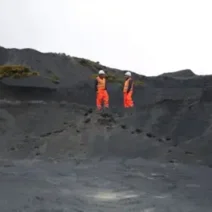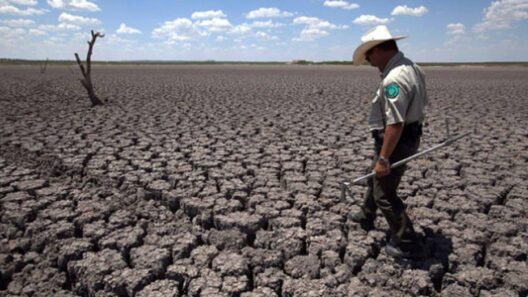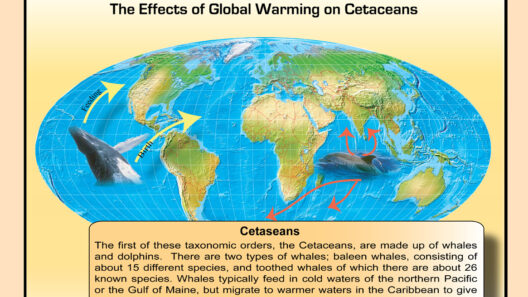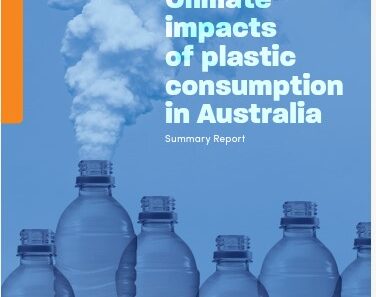The hydrological cycle, often referred to as the water cycle, is a fundamental, dynamic system that governs the movement of water across our planet. This intricate cycle encompasses various processes including evaporation, condensation, precipitation, infiltration, and runoff. With global warming increasingly altering temperatures, the equilibrium of the hydrological cycle is being disrupted. As we delve into the ramifications of climate change on this vital system, we unveil the profound transformations underway in how water travels on Earth.
Global warming initiates a cascade of changes in temperature, leading to increased evaporation rates. The World Meteorological Organization attributes heightened evaporation to rising surface temperatures. This phenomenon accelerates the transition of water from lakes, rivers, and oceans into the atmosphere. With more moisture in the air, the environment experiences significant alterations in weather patterns and precipitation distribution. The elevation in the frequency and intensity of storms is one of the most palpable consequences. This shift transforms typically mild weather systems into volatile tempests, resulting in both torrential downpours and devastating floods.
Moreover, as warmer air can hold more moisture, the intensity of storms is magnified, leading to the concept of “atmospheric rivers.” These narrow corridors of concentrated moisture can transport immense amounts of water vapor across vast distances, unleashing localized deluges that can inundate communities. This phenomenon, linked directly to the hydrological cycle’s disruption, embodies the sheer force of nature’s changing behavior. The aftermath is often catastrophic, with significant impacts on infrastructure, agriculture, and human safety.
The precipitation patterns of the world are also undergoing a seismic shift. Traditionally wet regions may experience increased rainfall, while arid regions could suffer more severe droughts. This partly stems from altered atmospheric circulation patterns induced by global warming. Higher global temperatures alter the jet streams, which dictate weather patterns around the world. Consequently, vital agricultural zones may find themselves inundated or parched, leading to repercussions that ripple through food security and water availability.
Droughts, increasingly prevalent in parts of the world, represent another facet of the hydrological highway affected by climate change. Areas historically characterized by moderate precipitation are now facing prolonged dry spells, prompting water scarcity. This scarcity has dire implications for ecosystems, agriculture, and human populations, particularly in developing countries where water access is already limited. The depletion of aquifers and surface water sources exacerbates the crisis, leading to an increase in competition for dwindling resources.
Furthermore, the hydrological cycle’s changes are intricately linked to the melting of polar ice caps and glaciers. As global temperatures rise, ice melt contributes to sea level rise, posing a fundamental threat to coastal ecosystems and human habitats alike. The influx of freshwater from melting glaciers can disrupt the salinity of oceans, which in turn affects marine life and ocean currents. This interplay between terrestrial and aquatic systems highlights the interconnectedness of the hydrological cycle; alterations in one facet invariably influence another.
Groundwater, often referred to as the hidden reservoir, is another component facing significant changes due to climate-induced alterations. When rainfall patterns shift, the recharge rates of aquifers are adversely affected. Both excessive rain and prolonged drought can reduce the infiltration of water into underground sources. This volatility has unsettling ramifications for water supply, particularly in regions reliant on groundwater for drinking, irrigation, and industry.
Human activities further exacerbate the challenges posed by climate change on the hydrological cycle. Urbanization and deforestation contribute to changes in land use, altering natural water flow. Impervious surfaces such as concrete prevent water from soaking into the ground, exacerbating runoff and flooding. Meanwhile, deforestation diminishes the landscape’s capacity to retain moisture, disrupting regional hydrology. These anthropogenic pressures culminate in a feedback loop, intensifying the impacts of climate change.
Interestingly, the hydrological cycle also holds potential for climate change mitigation strategies. Sustainable water management and conservation techniques can enhance the resilience of communities facing altered precipitation patterns. Implementing rainwater harvesting systems, restoring wetlands, and promoting watershed health can buffer against the negative impacts of climate change. These strategies not only help manage water resources but also serve as a proactive approach to safeguard against disruptions in the hydrological cycle.
Emerging technologies and innovative practices are essential for adapting to the impending changes. Integrated water resource management (IWRM) encourages a holistic approach to water usage, ensuring that quality and quantity concerns are addressed in conjunction. This methodology advocates for collaboration between sectors, stakeholders, and communities to develop resilience against the ramifications of altered water cycles due to climate instability.
In conclusion, as global warming continues to affect the hydrological cycle, we are witnessing a significant transformation in the way water travels through our planet. The shifts in evaporation, precipitation patterns, and groundwater availability not only threaten ecosystems and human societies but also offer avenues for adaptive responses. By recognizing and addressing these changes, we can better equip ourselves to navigate the complexities of the hydrological highway. It is imperative for individuals, communities, and policymakers to engage in informed, responsible water management to safeguard this invaluable resource in the age of climate change.








